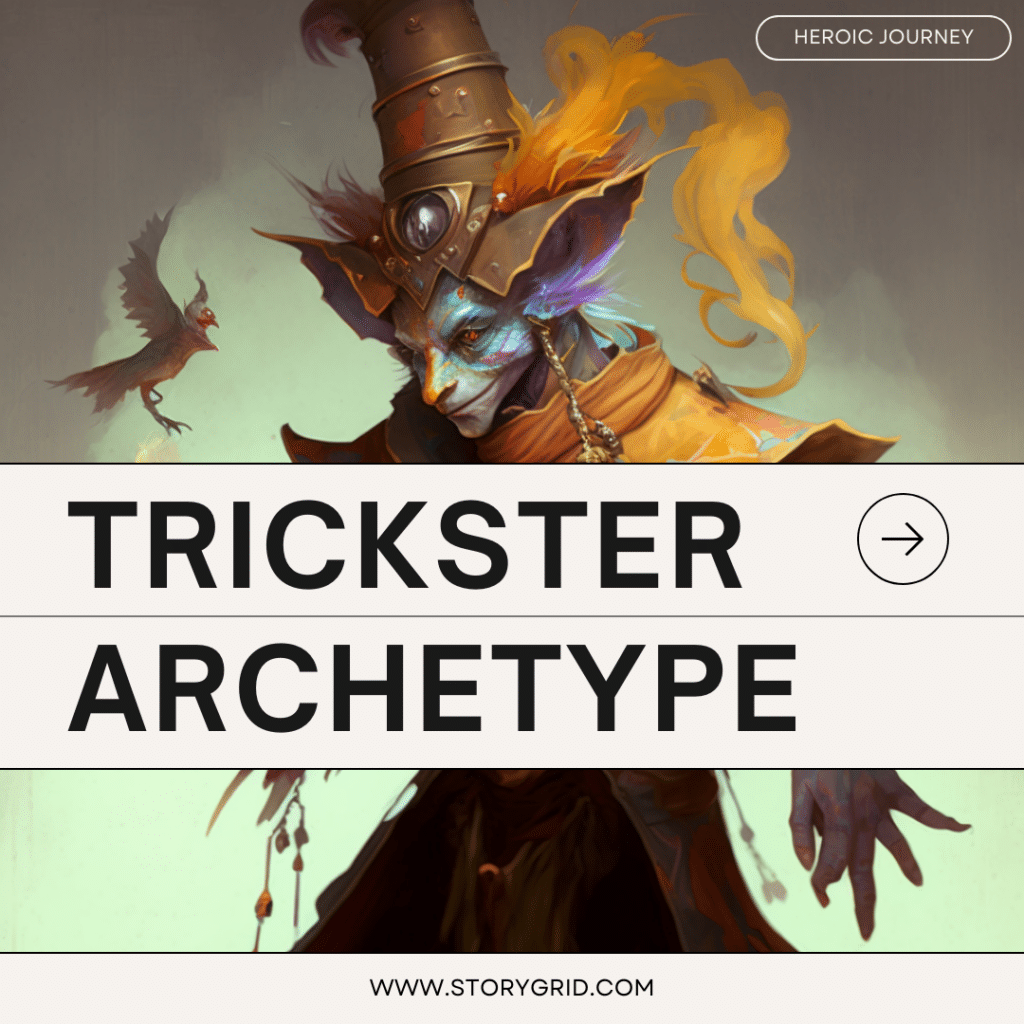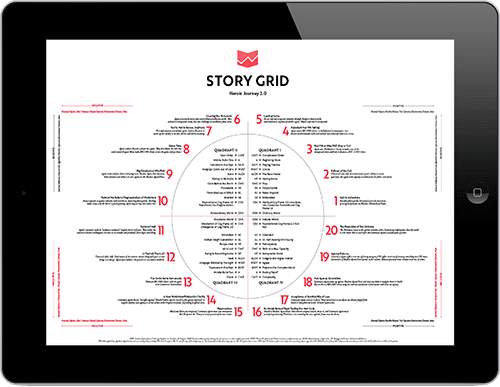The trickster archetype is a character type in storytelling that is often associated with disruption, mischief, and humor. Tricksters are known for their cunning, wit, and unpredictability, which often challenge the status quo and cause unexpected events in stories. This character type is used in a wide range of stories, from ancient myths and legends to contemporary novels and movies, and is part of the HEROIC JOURNEY archetypes.
In this article, we will explore the trickster archetype in stories and how writers can use this character type to enhance their narratives.

What is the Trickster Archetype?
The trickster archetype is a character who represents disruption, mischief, and humor. Tricksters are often portrayed as cunning, witty, humorous, and unpredictable AVATARS who challenge the status quo and cause unexpected events in our stories. They can be heroes, villains, allies or enemies depending on their actions and motivations. The trickster archetype is a recurring theme in storytelling that your story must have in some form.

Are you writing a Heroic Journey story?
Download our highly detailed infographic outlining the 20 major scenes you must have in every story.
Examples of the Trickster Archetype in Stories
1. Tom Sawyer from Mark Twain’s The Adventures of Tom Sawyer

Tom Sawyer is a beloved character from Mark Twain’s novel The Adventures of Tom Sawyer. Tom is known for his playful and mischievous nature, often getting into trouble with his friends. He uses his trickster attributes to convince other AVATARS in the story into doing his bidding.
2. Loki from Norse mythology and Marvel Cinematic Universe

Loki is another well-known trickster character, appearing in Norse mythology and the Marvel Cinematic Universe. In Norse mythology, Loki is a mischievous god who uses his cunning and wit to cause trouble for the other gods. In the Marvel Cinematic Universe, Loki is portrayed as a complex character who switches between being an ally and an enemy to the Avengers.
3. Bugs Bunny from Looney Tunes

Bugs Bunny is a classic example of the trickster archetype, appearing in various Looney Tunes cartoons. Bugs Bunny is a mischievous rabbit who uses his intelligence and humor to outsmart his enemies and get out of sticky situations.
4. Peter Pan from J.M. Barrie’s Peter Pan

Peter Pan is a classic example of the trickster archetype, a mischievous and playful character who refuses to grow up. Peter uses his cunning to outsmart his enemies, and he often plays pranks on his friends, the Lost Boys.
5. The Cheshire Cat from Lewis Carroll’s Alice’s Adventures in Wonderland

The Cheshire Cat is a mysterious and enigmatic character who appears throughout Lewis Carroll’s Alice’s Adventures in Wonderland. He is known for his sly grin and his ability to disappear and reappear at will. He often engages Alice in confusing, philosophical discussion that seem to lack a point. The Cheshire Cat represents the power of illusion and the importance of questioning one’s assumptions.
6. Puck from William Shakespeare’s A Midsummer Night’s Dream

Puck is a mischievous fairy who serves as a central character in William Shakespeare’s A Midsummer Night’s Dream. He is known for his cunning and his ability to cause mischief among the mortal characters in the play. Puck represents the power of magic and the importance of embracing one’s wild side.
7. The Joker from DC Comics

The Joker is a notorious villain in the DC Comics universe, known for his unpredictability and his twisted sense of humor. He often uses pranks and jokes to disrupt the plans of Batman and his allies. The Joker represents the power of chaos and the danger of embracing one’s darker impulses.
8. Matilda Wormwood from Roald Dahl’s Matilda

Matilda is a clever and resourceful young girl who uses her intelligence and wit to outsmart the adults in her life. She often plays pranks on her cruel headmistress, Miss Trunchbull, and uses her telekinetic powers to right wrongs.
9. Deadpool from Marvel Comics:

Deadpool is a popular character in the Marvel Comics universe, known for his irreverent humor and his tendency to break the fourth wall. Deadpool is a mercenary who never quite takes life seriously as he hunts down his enemies.
10. Merry and Pippin from J.R.R. Tolkien’s The Lord of the Rings

Merry and Pippin are characters from J.R.R. Tolkien’s The Lord of the Rings who are examples of the innocent, playful trickster archetype. They often push the plot of the story forward by causing mischief that puts the characters in danger.
Why is the Trickster Archetype Important in Storytelling?
The trickster archetype is a crucial character type in storytelling, serving several essential functions in a narrative.
First, the trickster adds humor and levity to the story, providing a much-needed break from the tension and drama of the plot. The trickster can provide comic relief and keep the reader engaged in the story.
Second, the trickster represents disruption and change, reflecting the theme of transformation that is often present in stories. The trickster can challenge the protagonist’s assumptions and beliefs, forcing them to reconsider their goals and motivations. The trickster can also upset the balance of power, leading to unexpected twists and turns in the story.
Finally, the trickster can be instrumental in creating conflict and tension in the narrative. By presenting a character who is unpredictable and difficult to control, the writer can create an element of suspense in the story. The reader will be unsure of the trickster’s true intentions, which can create tension and keep the reader engaged in the narrative.
How can Writers use the Trickster Archetype in their Stories?
If you are a writer looking to incorporate the trickster archetype into your story, there are several ways you can do so effectively. Here are a few tips to consider:
- Develop a unique trickster character: While the trickster archetype is a well-established character type, it is important to create a trickster that is unique and memorable. Think about what makes your trickster character different from other trickster characters in popular culture. What are their strengths and weaknesses, and how do they impact the story? What lessons do they teach the protagonist, and how do those lessons contribute to the protagonist’s growth and development?
- Use the trickster to provide comic relief: The trickster archetype is a powerful tool for providing comic relief in the story. By presenting a character who is witty and humorous, you can break up the tension and drama of the plot, keeping the reader engaged and entertained.
- Consider using the trickster to challenge the protagonist: The trickster archetype can be a powerful tool for challenging the protagonist’s assumptions and beliefs. By presenting a character who is unpredictable and difficult to control, the trickster can force the protagonist to reconsider their goals and motivations. This can create a sense of personal growth and development for the protagonist, as they learn to see the world in a new light.
- Use the trickster to upset the balance of power: The trickster archetype can also be instrumental in creating conflict and tension in the narrative. By presenting a character who is unpredictable and difficult to control, the trickster can upset the balance of power and lead to unexpected twists and turns in the story. This can create suspense and keep the reader engaged in the narrative.
- Consider using the trickster as a moral guide: While the trickster archetype is often associated with mischief and humor, it is also possible to use the trickster as a moral guide for the protagonist. By presenting a character who challenges the protagonist’s assumptions and beliefs, the trickster can help the protagonist grow and develop as a person.
Final Thought on Tricksters
The trickster archetype is a powerful character type in storytelling, providing humor, disruption, and change to the narrative and is part of the HEROIC JOURNEY archetypes. By incorporating a trickster character into your story, you can create a more engaging and compelling narrative. Consider the examples and tips discussed in this article as you develop your trickster character and their role in your story.
More Heroic Journey Resources
Share this Article:
🟢 Twitter — 🔵 Facebook — 🔴 Pinterest
Sign up below and we'll immediately send you a coupon code to get any Story Grid title - print, ebook or audiobook - for free.
(Browse all the Story Grid titles)